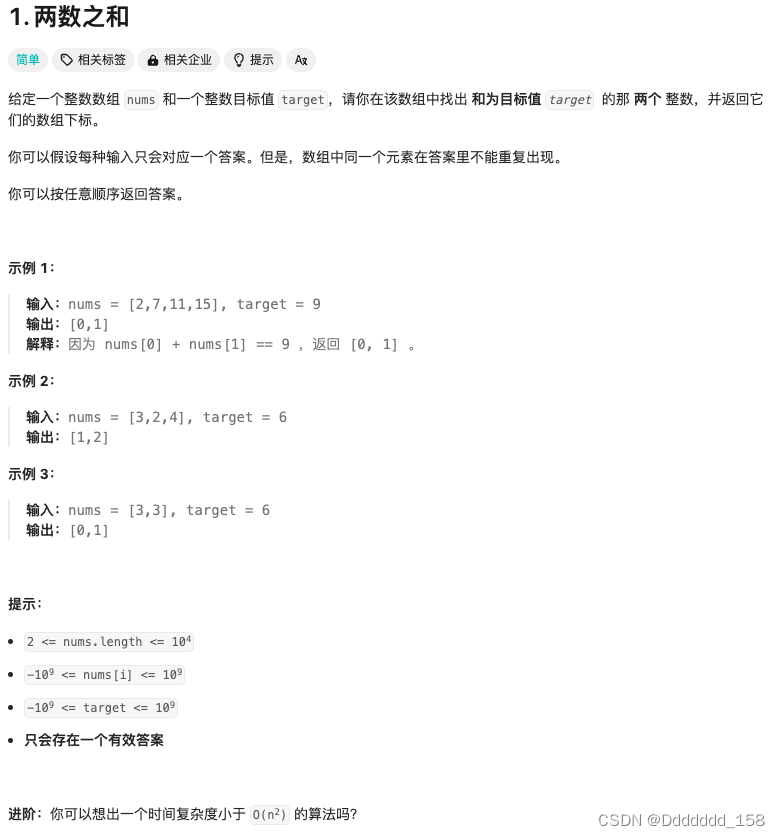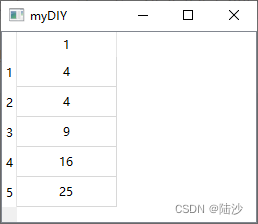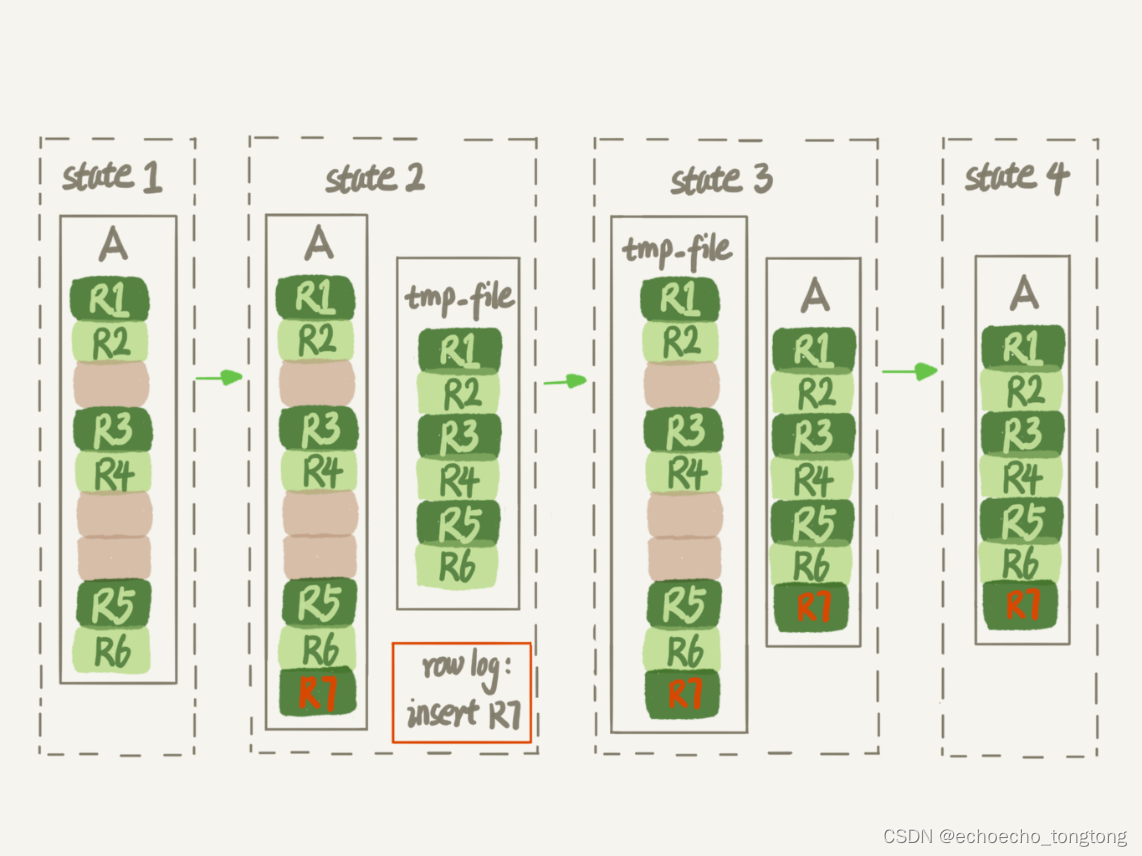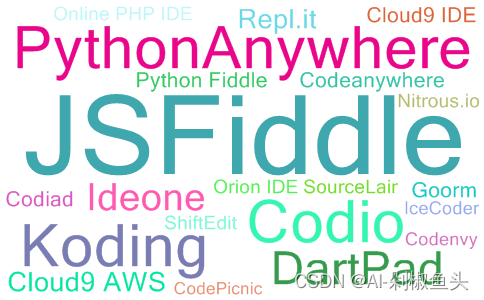目标
- 关于gin.Default(),gin.New(),gin.Use()
- group与子group之间的关系,多group与middleware之间关系
- 中间件的类型,全局,group,get,不同类型的中间件什么时候执行。中间件 next 和abort行为
- 如何实现http请示请求?http并发如何处理,middleware的context是什么
基本用法
func initMiddleware(ctx *gin.Context) {
fmt.Println("全局中间件 通过 r.Use 配置")
// 调用该请求的剩余处理程序
ctx.Next()
// 终止调用该请求的剩余处理程序
//ctx.Abort()
}
//0. 初始化
r := gin.Default()
//1. 全局中间件
r.Use(initMiddleware)
//2. group与子group,类型为RouterGroup
adminRouter := router.Group("/admin", initMiddleware)
userRouter := adminRouters.Group("/user", initMiddleware)
//3. 请求
userRouters.GET("/user", initMiddleware, controller.UserController{}.Index)
//4. 中间件共享数据
ctx.Set("username", "张三")
username, _ := ctx.Get("username")
关于初始化
使用流程中涉及到几个重要的结构体
gin.Engine,gin.Context,gin.RouterGroup
gin.Default(),gin.New(),gin.Use()
func Default() *Engine {
// 初始化一个新的Egine
engine := New()
// 默认注册全局中间件Logger()和Recovery()
//Logger()定义一个中间件,实现每次请求进来的日志打印
//可以配置日志的过滤路径,打印颜色,打印的位置等
//Recovery()定义一个中间件,用来拦截运行中产生的所有panic,输出打印并返回500
//同样可以配置全局panic拦截的行为
//如果要配置Logger与Recovery则直接在应用中使用gin.New()。然后再在应用中调用
//engine.Use(LoggerWithFormatter(xxxx), RecoveryWithWriter(xxxx))。
engine.Use(Logger(), Recovery())
return engine
}
//初始化Engine
func New() *Engine {
engine := &Engine{
//初始化化第一个RouterGroup, root表示是否为根RouterGroup
RouterGroup: RouterGroup{
Handlers: nil,
basePath: "/",
root: true,
},
FuncMap: template.FuncMap{},
TrustedPlatform: defaultPlatform,
MaxMultipartMemory: defaultMultipartMemory,
//请求方法数组,GET,POST,DELETE,每个方法下面有个链表
trees: make(methodTrees, 0, 9),
delims: render.Delims{Left: "{{", Right: "}}"},
//已删除部分配置项
}
//给第一个Group配置engine,也就是本engine
engine.RouterGroup.engine = engine
engine.pool.New = func() any {
return engine.allocateContext(engine.maxParams)
}
return engine
}
//注册全局中间件
func (engine *Engine) Use(middleware ...HandlerFunc) IRoutes {
//把middleware函数append到上面创建的engine的根RouterGroup的Handlers数组中
engine.RouterGroup.Use(middleware...)
//初始化404和405处理的中间间
engine.rebuild404Handlers()
engine.rebuild405Handlers()
return engine
}Engine继承了RouterGroup,gin.Default()初始化了Engine与第一个RouterGroup,并初始化了两个默认的中间件,Logger(), Recovery(),他们的作用与配置上面代码中有介绍
gin.Use的核心功能为把传入进来的中间件合并到RouterGroup的Handlers数组中,代码如下
group.Handlers = append(group.Handlers, middleware...)重要的结构体
type HandlerFunc func(*Context)
type HandlersChain []HandlerFunc
type RouterGroup struct {
Handlers HandlersChain
basePath string
engine *Engine
root bool
}
type RoutesInfo []RouteInfo
type Engine struct {
//继承RouterGroup
RouterGroup
//此处已省略部分gin的请求配置的字段,
//gin的很多请求配置都在这,需要了解的可以看一下注释或官方文档
delims render.Delims
HTMLRender render.HTMLRender
FuncMap template.FuncMap
//所有的404的回调中间件
allNoRoute HandlersChain
//所有的405请求类型没对上的回调中间件,使用gin.NoMethod设置
allNoMethod HandlersChain
//404的回调中间件,使用gin.NoRoute设置,会合并到allNoRoute中
noRoute HandlersChain
//同上
noMethod HandlersChain
pool sync.Pool
trees methodTrees
}创建Group
Engine继承RouterGroup,RouterGroup里又有一个engine变量
之前猜测,RouterGroup与RouterGroup之前通过链表连接起来,目前来看上一个RouterGroup与当前RouterGroup没什么连接关系
只是利用上一个RouterGroup的Group函数创建一个新的RouterGroup,并把之前RouterGroup与Engine注册的中间件全部复制过来
//用法:adminRouters := r.Group("/admin", middlewares.InitMiddleware)
//参数relativePath:RouterGroup的路径
//参数handlers:处理函数
func (group *RouterGroup) Group(relativePath string, handlers ...HandlerFunc) *RouterGroup {
//创建一个新的RouterGroup
return &RouterGroup{
//把上一个Router的中间件,全局中间件与新中间件函数合并到新Router
Handlers: group.combineHandlers(handlers),
//把上一个Router的路径与新的Router路径相加得到新的地址
basePath: group.calculateAbsolutePath(relativePath),
engine: group.engine,
}
}创建Get请求
//使用方法userRouters.GET("/user", middlewares.InitMiddleware, controller.UserController{}.Index)
func (group *RouterGroup) GET(relativePath string, handlers ...HandlerFunc) IRoutes {
return group.handle(http.MethodGet, relativePath, handlers)
}
func (group *RouterGroup) handle(httpMethod, relativePath string, handlers HandlersChain) IRoutes {
absolutePath := group.calculateAbsolutePath(relativePath)
//这里有疑问,为什么要把GET请示所有的执行函数加入到group的handlers里
handlers = group.combineHandlers(handlers)
//把请求加入到方法树中
group.engine.addRoute(httpMethod, absolutePath, handlers)
return group.returnObj()
}
type node struct {
path string
indices string
wildChild bool
nType nodeType
priority uint32
children []*node // child nodes, at most 1 :param style node at the end of the array
handlers HandlersChain
fullPath string
}
type methodTree struct {
method string
root *node
}
type methodTrees []methodTree
func (engine *Engine) addRoute(method, path string, handlers HandlersChain) {
//engine.trees,是一个methodTrees的切片
//trees.get()找到哪一个属于GET请求的树,找不到则new一个
root := engine.trees.get(method)
if root == nil {
root = new(node)
root.fullPath = "/"
engine.trees = append(engine.trees, methodTree{method: method, root: root})
}
//插入router的请求树中
root.addRoute(path, handlers)
//删除部分参数初始化
}插入请求树
//第一个路径/list
//第二个路径/list2
//第三个路径/licq
//第四个路径/li:id
func (n *node) addRoute(path string, handlers HandlersChain) {
fullPath := path
n.priority++
//插入第一个路径时,root node为空,直接插入
if len(n.path) == 0 && len(n.children) == 0 {
//insertChild做两件事
//1. 解析参数,并插入参数节点
//2. 直接参数节点,第一个路径节点就简单地插入到GET的tree中
//到此/list结点添加完成,type=1, childrenLen=0, priority:1, indices:无
n.insertChild(path, fullPath, handlers)
n.nType = root
return
}
parentFullPathIndex := 0
walk:
for {
// Find the longest common prefix.
// This also implies that the common prefix contains no ':' or '*'
// since the existing key can't contain those chars.
//找出新插入路径path与上一个插入的节点的路径做比较,找出连续相同字符的数量
// /xxx/list与/xxx/list2,前9个字符相同,所以i等于9
i := longestCommonPrefix(path, n.path)
// Split edge
// 添加list2:list2的i == len(n.path)相同,不走这里
// 添加licq: 走这里,且整棵树下移
if i < len(n.path) {
child := node{
path: n.path[i:],
wildChild: n.wildChild,
nType: static,
indices: n.indices,
children: n.children,
handlers: n.handlers,
priority: n.priority - 1,
fullPath: n.fullPath,
}
//整棵树下移
n.children = []*node{&child}
// []byte for proper unicode char conversion, see #65
n.indices = bytesconv.BytesToString([]byte{n.path[i]})
//第一次添加list,第一个节点为的path为list
//第二次添加list2,因为与父节点节点前面相同,则父节点path为list,节点path为2
//第三次添加licq,新节点与list节点前面li相同,
//所以把父节点改为li,原来的list改为st, cq节点与st结点同为li的子节点,
//最终结构如下
// |->cq
//li |
// |->st-->2
//修改原来的父节点
n.path = path[:i]
n.handlers = nil
n.wildChild = false
n.fullPath = fullPath[:parentFullPathIndex+i]
}
// 添加list2:list2的i < len(path)走这里
// Make new node a child of this node
if i < len(path) {
//截取list2中的2,path==[2]
path = path[i:]
c := path[0]
// '/' after param
// 添加list2:n为上个list的node的nType为root,不走这里
if n.nType == param && c == '/' && len(n.children) == 1 {
parentFullPathIndex += len(n.path)
n = n.children[0]
n.priority++
continue walk
}
// Check if a child with the next path byte exists
// 如果父节点有indices,且与c相同,则找下一个节点
for i, max := 0, len(n.indices); i < max; i++ {
if c == n.indices[i] {
parentFullPathIndex += len(n.path)
i = n.incrementChildPrio(i)
n = n.children[i]
continue walk
}
}
// Otherwise insert it
if c != ':' && c != '*' && n.nType != catchAll {
// 添加list2:list的node的indices为2
// []byte for proper unicode char conversion, see #65
n.indices += bytesconv.BytesToString([]byte{c})
// 添加list2:创建list2的node
child := &node{
fullPath: fullPath,
}
// 添加list2:把list2的node插入到list的node children中
n.addChild(child)
// 添加list2:设置priority,并把高priority的chdil排在前面
n.incrementChildPrio(len(n.indices) - 1)
// 这里把n切换为child,做后面的设置
n = child
} else if n.wildChild {
// inserting a wildcard node, need to check if it conflicts with the existing wildcard
n = n.children[len(n.children)-1]
n.priority++
// Check if the wildcard matches
if len(path) >= len(n.path) && n.path == path[:len(n.path)] &&
// Adding a child to a catchAll is not possible
n.nType != catchAll &&
// Check for longer wildcard, e.g. :name and :names
(len(n.path) >= len(path) || path[len(n.path)] == '/') {
continue walk
}
// Wildcard conflict
pathSeg := path
if n.nType != catchAll {
pathSeg = strings.SplitN(pathSeg, "/", 2)[0]
}
prefix := fullPath[:strings.Index(fullPath, pathSeg)] + n.path
panic("'" + pathSeg +
"' in new path '" + fullPath +
"' conflicts with existing wildcard '" + n.path +
"' in existing prefix '" + prefix +
"'")
}
//如上所述,如果路径没有参数,此函数的作用为n.handlers = handlers
n.insertChild(path, fullPath, handlers)
return
}
// Otherwise add handle to current node
if n.handlers != nil {
panic("handlers are already registered for path '" + fullPath + "'")
}
n.handlers = handlers
n.fullPath = fullPath
return
}
}路由树图示
下面通过图示来看一下,每次增加一个请求,路由树会有什么变化。
如果插入一个带参数的请求如/list/:id/:sn,流程和上面代码所分析的基本一至,只是会在/list挂两个param结点,id与sn
userRouters.GET("/list", Index)
userRouters.GET("/list2", Index)
userRouters.GET("/list23", Index)
userRouters.GET("/list33", Index)
userRouters.GET("/liicq", Index)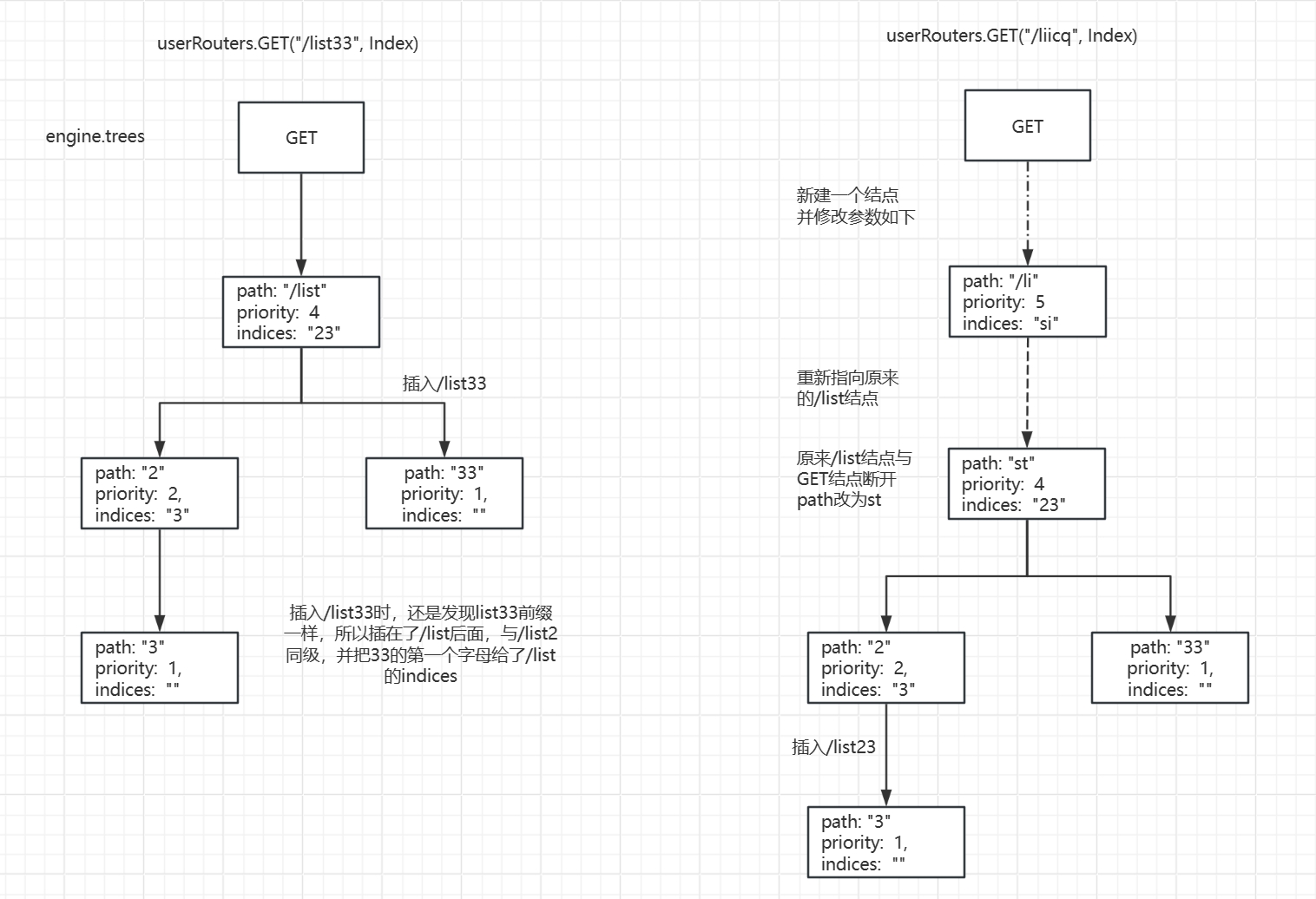
测试代码
自己写了一个代码去打印树结构
func _p(level int, pre string, n *node){
for i := 0; i < level+1; i++ {
fmt.Print(pre)
}
fmt.Printf(" path=%v, type=%d, childrenLen=%d, priority:%d, indices:%s, wildChild=%t\n",
n.path, n.nType, len(n.children), n.priority, n.indices, n.wildChild)
}
func (group *RouterGroup) printNode(level int, node *node) {
if len(node.children) != 0 || level == 0 {
_p(level, "#", node)
}
if len(node.children) != 0 {
for _, n := range node.children {
_p(level, "-", n)
}
level++
for _, n := range node.children {
group.printNode(level, n);
}
}
}打印结果
//测试内容
userRouters.GET("/list", Index)
userRouters.GET("/list2", Index)
userRouters.GET("/list23", Index)
userRouters.GET("/list33", Index)
userRouters.GET("/liicq", Index)
//打印结果
# path=/admin/user/li, type=1, childrenLen=2, priority:5, indices:si, wildChild=false
- path=st, type=0, childrenLen=2, priority:4, indices:23, wildChild=false
- path=icq, type=0, childrenLen=0, priority:1, indices:, wildChild=false
## path=st, type=0, childrenLen=2, priority:4, indices:23, wildChild=false
-- path=2, type=0, childrenLen=1, priority:2, indices:3, wildChild=false
-- path=33, type=0, childrenLen=0, priority:1, indices:, wildChild=false
### path=2, type=0, childrenLen=1, priority:2, indices:3, wildChild=false
--- path=3, type=0, childrenLen=0, priority:1, indices:, wildChild=false
//测试内容
userRouters.GET("/list", Index)
userRouters.GET("/list2", Index)
userRouters.GET("/list23", Index)
userRouters.GET("/list33", Index)
userRouters.GET("/liicq", Index)
userRouters.GET("/lipar/:id/:sn", Index)
userRouters.GET("/lipar2", Index)
//打印结果
# path=/admin/user/li, type=1, childrenLen=3, priority:7, indices:spi, wildChild=false
- path=st, type=0, childrenLen=2, priority:4, indices:23, wildChild=false
- path=par, type=0, childrenLen=2, priority:2, indices:/2, wildChild=false
- path=icq, type=0, childrenLen=0, priority:1, indices:, wildChild=false
## path=st, type=0, childrenLen=2, priority:4, indices:23, wildChild=false
-- path=2, type=0, childrenLen=1, priority:2, indices:3, wildChild=false
-- path=33, type=0, childrenLen=0, priority:1, indices:, wildChild=false
### path=2, type=0, childrenLen=1, priority:2, indices:3, wildChild=false
--- path=3, type=0, childrenLen=0, priority:1, indices:, wildChild=false
## path=par, type=0, childrenLen=2, priority:2, indices:/2, wildChild=false
-- path=/, type=0, childrenLen=1, priority:1, indices:, wildChild=true
-- path=2, type=0, childrenLen=0, priority:1, indices:, wildChild=false
### path=/, type=0, childrenLen=1, priority:1, indices:, wildChild=true
--- path=:id, type=2, childrenLen=1, priority:1, indices:, wildChild=false
#### path=:id, type=2, childrenLen=1, priority:1, indices:, wildChild=false
---- path=/, type=0, childrenLen=1, priority:1, indices:, wildChild=true
##### path=/, type=0, childrenLen=1, priority:1, indices:, wildChild=true
----- path=:sn, type=2, childrenLen=0, priority:1, indices:, wildChild=false
下篇文章了解一下gin启动都做了什么工作,中间件如何被调用,以及request是如何并发的



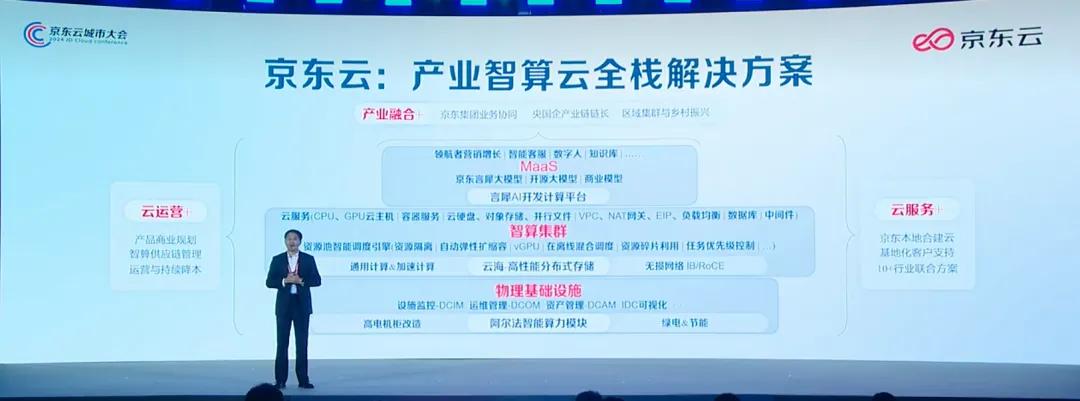



![【洛谷 P8700】[蓝桥杯 2019 国 B] 解谜游戏 题解(字符串+映射+周期性)](https://img-blog.csdnimg.cn/img_convert/c1733f6b4f09b37cf356fb26028fffe0.png)


